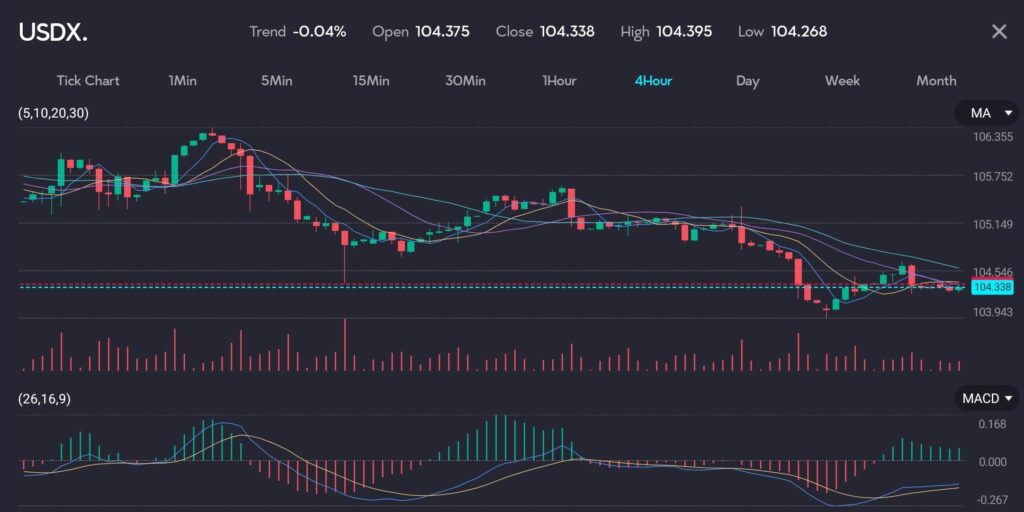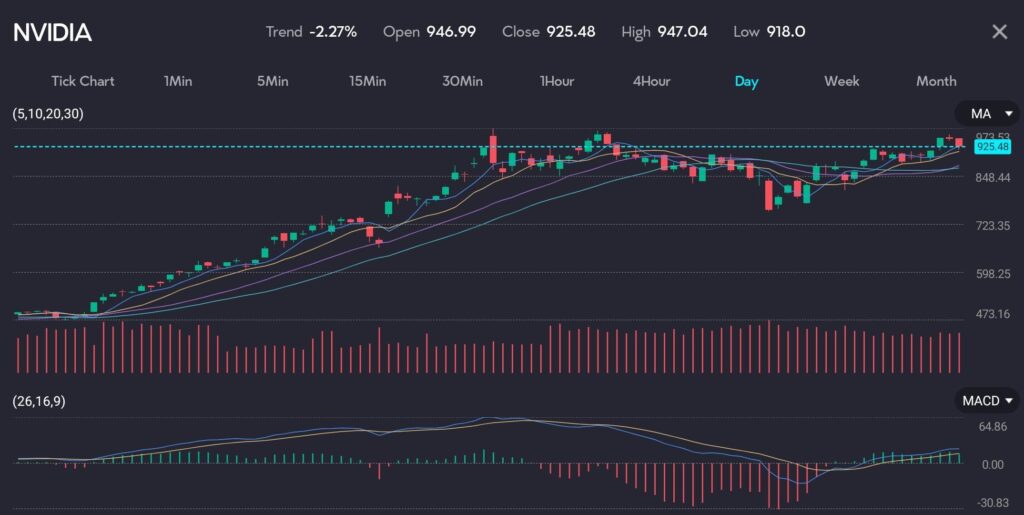Key Points:
- The DXY index declined significantly due to softer-than-expected CPI figures, indicating a potential return to a disinflationary trend.
- Federal Reserve speculation rises as inflation data suggests possible easing of monetary policy in the fall.
The U.S. Dollar Index (DXY) experienced a sharp drop due to softer-than-expected consumer price index (CPI) figures. The CPI data had rekindled hopes that the disinflationary trend, which had recently stalled, is now back on track.

SEE: The DXY (symbol: USDX.) seeing a significant dip on the VT Markets trading app
A drop in the DXY often precedes a period of economic adjustment. For instance, in 2017, a similar decline in the dollar index led to a realignment in global currency markets, paving the way for growth in emerging markets.
Encouraging inflation data has fueled speculation that the Federal Reserve might ease its monetary policy sooner than anticipated, potentially this fall. This anticipation is grounded in the belief that lower inflation will reduce the pressure on the Fed to maintain higher interest rates.
Periods of monetary easing, such as the rate cuts in 2008 during the financial crisis, have been associated with increased market liquidity and improved economic stability.
Euro and British Pound surge to multi-month highs against U.S. dollar
Both the euro and British pound surged to multi-month highs against the U.S. dollar. This strength can be attributed to positive economic signals from Europe and the UK, combined with the dollar’s weakness.
Such currency movements can lead to improved export competitiveness for the eurozone and the UK, potentially boosting their economic growth.
Gold is nearing its all-time high, and silver has reached its strongest level since 2013. Precious metals often act as a hedge against economic uncertainty and inflation. The current rally suggests that investors are seeking safe-haven assets amidst market volatility.
Upcoming Economic Calendar in May 2024
The upcoming week features a relatively light economic calendar, with the FOMC minutes and May S&P Global PMI results being the main highlights. This suggests that recent market moves may consolidate as investors wait for more significant catalysts. In quiet weeks like these, markets often see lower volatility but are highly reactive to any unexpected news.
Set to be released on Wednesday, the April inflation data in the UK could be crucial. A stronger-than-expected reading might reduce the likelihood of a Bank of England rate cut in June, while a subdued report could solidify expectations for such a cut.
This data will be closely watched as it can provide insights into the UK’s economic health and future monetary policy direction.
The stock market saw a record-setting week, driven by signs of an inflation cooldown and optimism about potential Federal Reserve interest rate cuts. Major indices hit record highs:
- Nasdaq Composite (^IXIC) rose over 2%.
- S&P 500 (^GSPC) increased by more than 1.5%.
- Dow Jones Industrial Average (^DJI) surpassed 40,000 for the first time.
Highly anticipated earnings results from Nvidia (NVDA) are expected to be the key market catalyst. Analysts expect Nvidia’s earnings to have grown by over 400% in the prior quarter, with revenue up 242%. These results will be closely monitored as they can set the tone for the broader technology sector.

SEE: NVIDIA rallies, waiting for earnings data on the VT Markets trading app
Earnings reports from Target (TGT), Palo Alto Networks (PANW), and Lowe’s (LOW) will also be in focus. Additionally, updates on the manufacturing and services sectors and the final reading of consumer sentiment for May will provide further insights into the economic landscape.
Minutes from the Fed’s May meeting, set to be released on Wednesday, are expected to provide a deeper look at the discussion among officials.
CPI sees lowest annual increase in three years
The consumer price index showed that core prices rose 3.6% over last year, the lowest annual rise in three years. This has led investors to price in two full interest rate cuts this year. Market projections are aligning with the Fed’s expectations of two or three rate cuts in 2024.
Fed meeting minutes are expected to provide insights into the central bank’s thinking. Bank of America economist Michael Gapen suggests the minutes might sound more hawkish than Chair Powell’s press conference.
Deutsche Bank’s Binky Chadha raised his year-end target for the S&P 500 to 5,500 from 5,100, citing robust earnings growth and an improving macroeconomic outlook.
Nvidia’s stock is up more than 86% in 2024 and over 200% in the past year. High expectations for continued growth in earnings and revenue suggest that Nvidia’s performance could influence other AI-related stocks and the broader market.
The expansion of the AI trade has seen mentions soar in earnings calls, with significant growth in sectors like Energy and Utilities.







